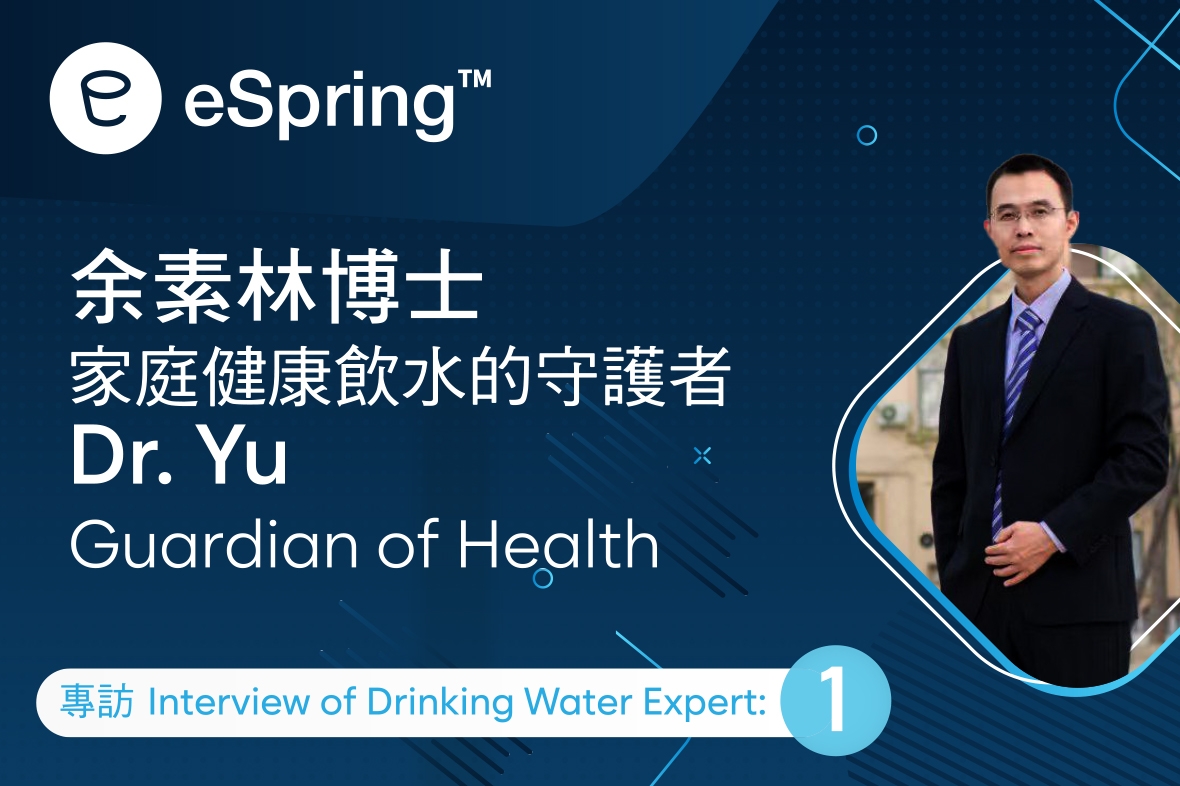

The recently held【New eSpring Water Purifier|Training Seminar】received an enthusiastic response. Dr. Yu Su-Lin shared his insights and research on Water Safety with sincerity and professionalism, earning praises from attendees. To help more leaders understand Dr.Yu’s philosophy and passion, we conducted an in-depth interview with him, which will be published in three articles on Amway Express.
A: Amway
Y: Dr. Yu Su-Lin
A: You have many years of research experience in environmental engineering. Could you briefly share what led you to focus on drinking water safety?
Y: I’ve been dedicated to environmental science and engineering since my undergraduate studies, continuing through my Master, PhD, and Post-graduate research. Over time, my understanding of drinking water safety deepened, especially regarding emerging contaminants, antibiotics, endocrine disruptors, and disinfection by-products that may pose long-term health risks.
After graduation, I worked at the Yangtze Delta Research Institute of Tsinghua University in Jiaxing, Zhejiang. Due to limited water sources, the local drinking water quality was relatively poor. My child had just been born back then, which made me particularly concerned about the safety of drinking water in Jiaxing.
A: Was there any particular discovery in your research that shocked you or changed your view on water quality?
Y: During our testing of local water quality, we found widespread presence of endocrine disruptors and carcinogens. Although their concentrations were within controllable limits, they were not among the target pollutants monitored by water treatment plants. This made me realize that water deemed “qualified” by treatment plants isn’t necessarily 100% safe.
A: What’s your view on the current tap water quality in Hong Kong? Is it safe enough?
Y: Hong Kong’s drinking water standards are based on the World Health Organization’s (WHO) Guidelines for drinking water quality, adapted to local conditions. The Water Supplies Department rigorously treats raw water (mainly sourced from the Dongjiang River and local catchments) through coagulation, sedimentation, filtration, and disinfection to ensure compliance with Hong Kong’s standards. Overall, tap water is safe and reliable when it leaves the water treatment plant.
However, after leaving the treatment plant, water flows through long pipelines and enters private building systems, where secondary contamination may occur. Additionally, emerging contaminants are not yet included in current monitoring indicators.
A: What should Hong Kong households pay the most attention to daily drinking water?
Y: The most critical concern of water safety lies in the “final one kilometre”. As mentioned, water may be contaminated after passing through aging or poorly maintained building systems. Residents should understand the materials and age of their building’s pipes, the condition of secondary water supply facilities, and the maintenance of water tanks.
Here are some tips to enhance drinking water safety:
1. Avoid drinking the “first flush” of water in the morning: metal substances may leach into stagnant water through water pipes overnight. It’s advisable to let the tap run for about two minutes each morning. This water can be used for flushing toilets, mopping floors, or watering plants to avoid waste.
2. Boil water before drinking: this traditional and widely used method effectively kills bacteria and viruses, offering simple and reliable disinfection.
3. Install a trustworthy water purifier: to further improve water quality, such as removing residual chlorine, odours, heavy metals, disinfection by-products, and emerging contaminants, you can consider installing a reliable water filtration system.
A: PFAS are known as “forever chemicals.” What potential health risks do they pose?
Y: PFAS represents a vast chemical family with thousands of compounds. Since the 1940s, they’ve been widely used in industrial and consumer products due to their oil-resistant, water-resistant, stain-resistant and heat-resistant features.
Their potential health risks have become a major concern for scientists and public health organizations worldwide. Numerous epidemiological studies and animal experiments show that long-term or high-concentration exposure to PFAS may lead to various adverse health effects, depending on exposure levels and duration.
Health risks associated with PFAS include:
A: Besides PFAS, which emerging contaminants should Hong Kong citizens be most concerned about in the coming years?
Y: First, it is microplastics. Hong Kong is a global hub for shipping and trade which is surrounded by sea. Its proximity to the Zhujiang Delta means it receives upstream pollutants. When the plastic waste is being decomposed in the ocean, it directly pollutes Hong Kong’s waters and marine ecosystems.
Second, it is contaminants from pharmaceuticals and personal care products. These include human and veterinary prescription drugs, over-the-counter medications (like painkillers, antibiotics, hormones), and chemical ingredients in daily personal care items (such as UV filters in sunscreen, disinfectants, and fragrances). Antibiotics are particularly being concerned.
Third, it is endocrine disruptors. These are exogenous chemicals with molecular structures like natural hormones (e.g., estrogen, androgen, thyroid hormones). They can “cheat” our bodies and interfere with normal endocrine functions in various ways, even at extremely low concentrations, they may have profound health impacts.
Stay tuned for the next episode, where Dr. Yu will share insights on the drinking water needs of different population groups and the challenges of water purifier technology research.
Save to
Delete
Are you sure?
Do you really want to delete this bookmark list? This process cannot be undone
Confirm